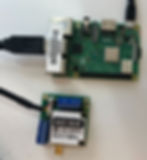
Tactical High-Altitude Balloon Launch Playbook
Army-451: Rewriting the Rules of Tactical Launches
Indiana University
Join Base Lewis-McChord
Industry:
Cyber & Network Operations
What began as a payload cutdown request from a platoon at Joint Base Lewis-McChord turned into something else entirely. Team ARMY-451, composed of students from Indiana University, quickly discovered that the real bottleneck in high-altitude balloon launches wasn’t the payload release—it was communication.
From the first week of interviews, the team found that cutdown devices already existed and worked well. But nearly every operator flagged the same pain point: no real-time communication with the balloon once launched. Teams couldn’t verify altitude, location, or system health in flight. And in some cases, they couldn’t even confirm whether the balloon had deployed correctly.
That clarity pushed the team to pivot. Their new mission: enable two-way communication between launch teams and high-altitude systems, ensuring that critical operations weren’t flying blind.
What Was at Stake
High-altitude balloons are increasingly vital to tactical ISR and comms extension. But the current state of field launches is messy. Without reliable post-launch comms, field units are forced to wait, hope, and estimate—making real-time course correction or early termination impossible.
This isn’t just a nuisance. It’s a liability. In contested environments, the inability to communicate with airborne assets can waste time, create security risks, and limit the operational utility of balloon deployments.
Fieldwork That Shifted the Mission
Armed with $1,228.84 from CMP’s Innovation Fund, the team procured a RockBLOCK Iridium module and began designing a lightweight integration system to support mid-flight communication and payload control. Their goal wasn’t to build a balloon—they wanted to empower existing launch teams with actionable control and real-time feedback.

They conducted interviews with operators across the 1st Multi-Domain Task Force, as well as signal officers and ISR support teams familiar with balloon use cases. Their work culminated in a prototype comms package that could receive and execute remote cutdown commands—while sending back location, altitude, and system health.
Operators of Another Kind
William Hall led the systems integration effort, ensuring the RockBLOCK configuration was field-appropriate and reliable.
Hriishikesh Zope focused on command interface logic and compatibility with existing ground control devices.

Supported by mentors from IU’s innovation ecosystem, the team balanced hardware validation with real-world operational requirements.
Next Moves and Lasting Impact The ARMY-451 team delivered a functional prototype and a comms control SOP now under review for broader use in training and deployment settings.
Their work underscores a critical insight: when field operators tell you the real problem, listen—and move.
Advice to Future Students
“Don’t build what you’re told to build,” William said. “Build what the mission is actually asking for.”







































